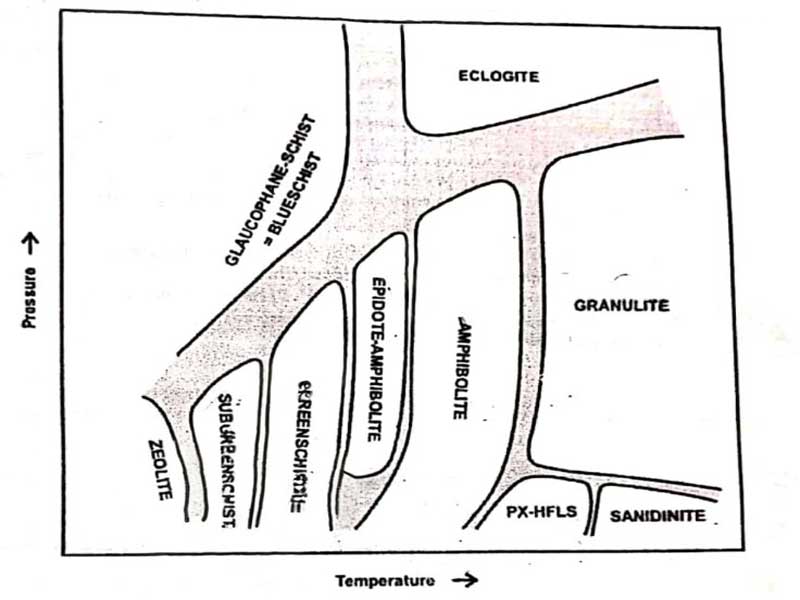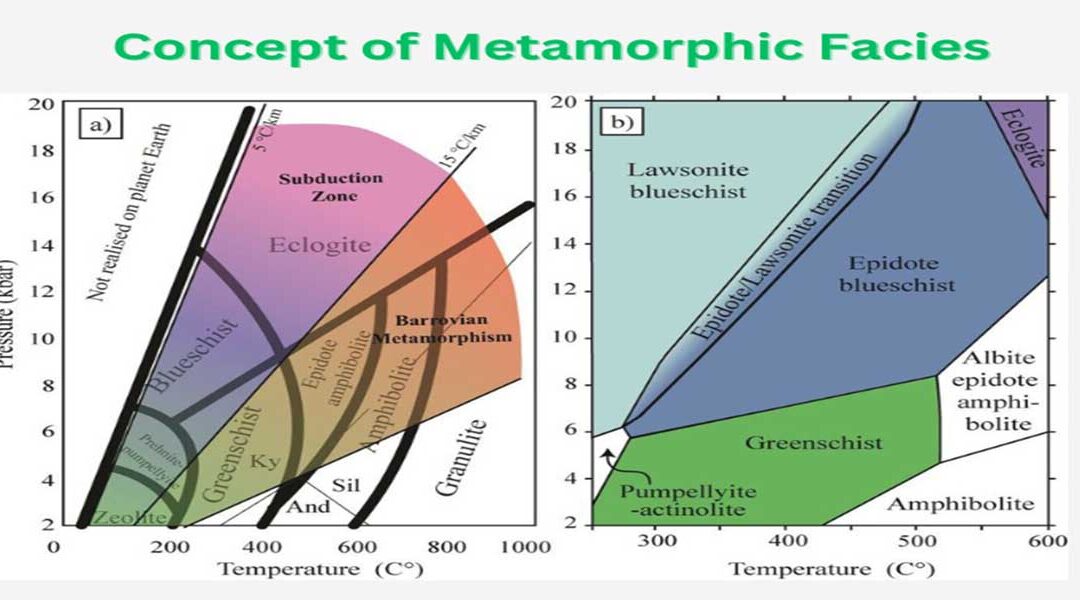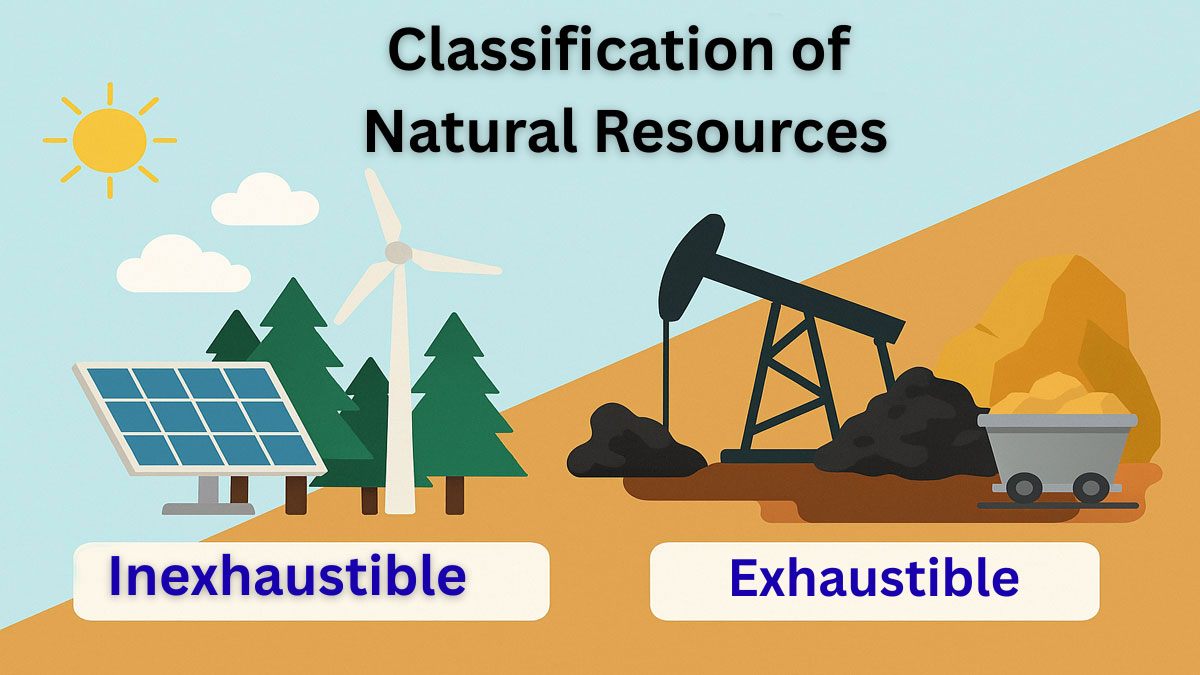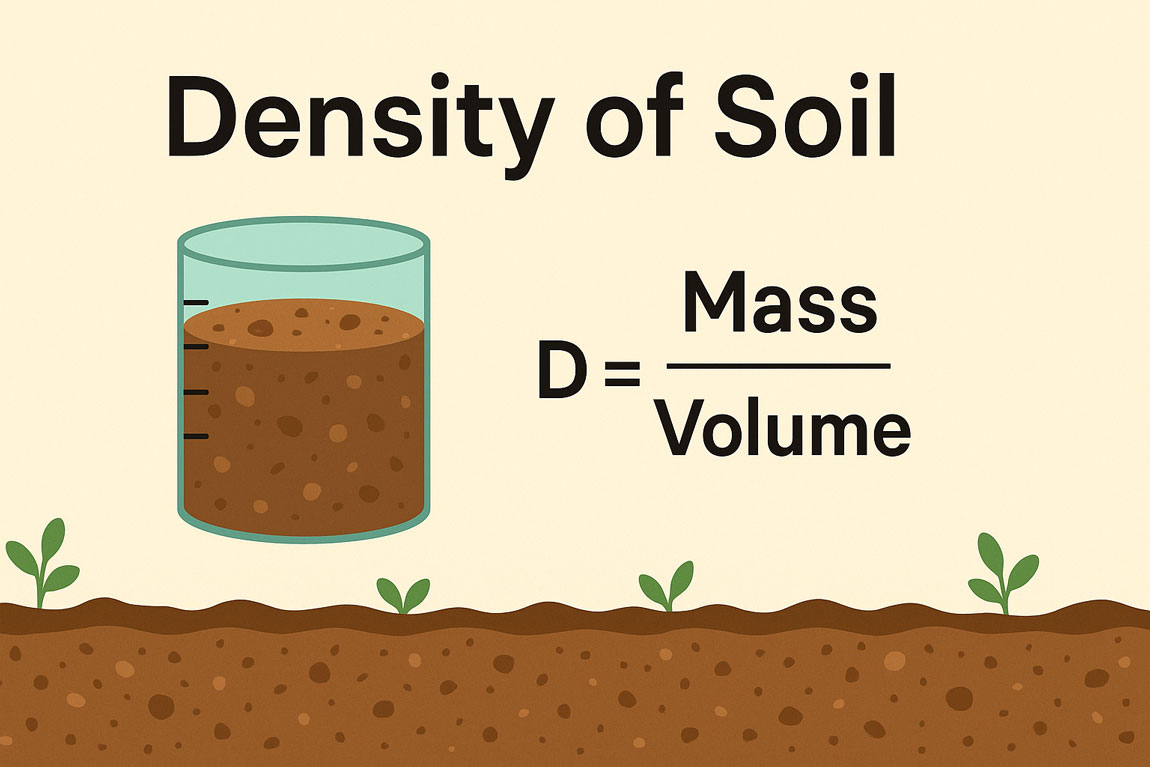The Concept of Metamorphic Facies, introduced by Eskola in 1915, classifies metamorphic rocks based on mineral assemblages formed under specific temperature and pressure conditions. Each facies represents a distinct P-T field, aiding in the study of metamorphic processes, rock transformations, and geological history.
Concept of Metamorphic Facies:
Eskola (1915) developed the concept of metamorphic facies:
In any rock or metamorphic formation that has achieved chemical equilibrium under consistent temperature and pressure, the mineral composition is solely influenced by the chemical makeup. This leads us to a broader understanding, which I suggest we refer to as metamorphic facies.
Dual Basis for the facies concept:
Descriptive:
- Relationship between the Xbulk & mineralogy
- A fundamental feature of Eskola’s concept.
- Metamorphic facies represent a collection of mineral assemblages that are consistently found together during the metamorphic process.
- If we come across a specific assemblage, or ideally, a set of compatible assemblages representing a variety of compositions in the field, we can then categorize certain facies for the area.
Interpretive:
- The various temperature and pressure conditions associated with each facies.
- Eskola understood the implications of P-T and accurately identified the temperature and pressure conditions of the facies he proposed.
- Now, it is possible to allocate fairly precise temperature and pressure thresholds to each specific facies.
Eskola (1920) proposed five original facies:
- Greenschist
- Amphibolite
- Hornfels
- Sanidinite
- Eclogite
Clearly characterized by the mineral assemblages that form within mafic rocks.
In his final account, Eskola (1939) added:
- Granulite
- Epidote-Amphibolite
- Glaucophane-schist (Now called Blueschist)
The hornfels facies have been renamed to the pyroxene hornfels facies.
Several additional facies types have been proposed. Most Notable are:
- Zeolite
- Prehnite-pumpellyite
From Coombs in the “burial metamorphic” terraces of New Zealand.
Fyle et al (1958) also proposed
- Albite-Epidote hornfels
- Hornblende hornfels
Relative Pressure-Temperature fields of various metamorphic facies:

Figure: Diagram showing the relative position of the ten facies in the P-T field.
Metamorphic facies and their relative temperatures (T) and pressures (P) are as follows:
- Contact metamorphic facies-low P, low to extreme T.
- Zeolite facies-low T, low to intermediate P, gradational from diagenesis.
- Greenschist facies- low to intermediate P and T.
- Amphibolite facies- intermediate to high P and T.
- Glaucophane schist facies (Blue schist facies) – low T, very excessive P.
- Granulite facies-high P and T.
- Eclogite facies-excessive T and really excessive P.






